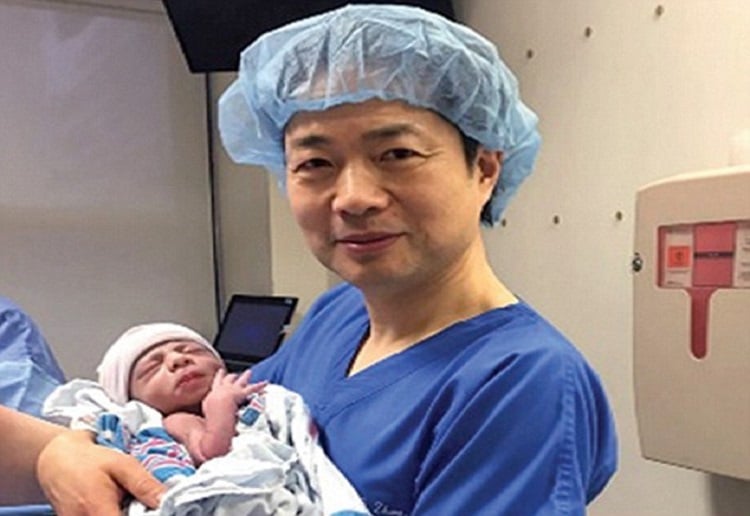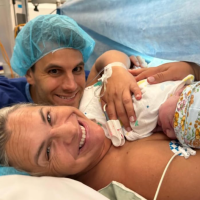The world’s first “three parent baby” has been born using the genes of three people.
The five-month-old baby boy carries DNA from both his parents. But he also has a tiny piece of genetic code from a donor, reports Daily Mail.
It means he has avoided inheriting a genetic condition from his mum that could kill him.
Embryologists believe this birth should fast-forward progress around the world, offering hope to millions who face the prospect of delivering terminally ill children.
‘This is a milestone technique,’ Dr John Zhang, who led the medical team from New York City’s New Hope Fertility Center, told Daily Mail Online.
‘It proves for the first time that genetic information from three people can avoid disease,’ he said.
‘We now know reconstitution of human eggs can produce a healthy baby.
‘No other technique has been established.’
The parents have already lost two children to the same condition – Leigh’s syndrome – their first at the age of six; their second at eight months.
Leigh’s syndrome is a severe neurological disorder which attacks the nervous system.
It gradually inhibits a child’s mental and physical abilities from the moment they are born.
Sufferers typically die by the age of three due to lung failure.
Tests revealed that, in this case, the boy’s mother carries genes for the disease in her mitochondria.
Devastated by the loss of their two children, the couple flew to America to meet with Dr Zhang at New Hope, a facility which focuses on training in new innovations.
With strict regulations in the United States, the team went to Mexico.
The boy was born through a technique called spindle nuclear transfer.
Dr Zhang removed the nucleus from one of his mother’s eggs. It was then inserted in a donor egg that had its nucleus removed.
This egg was then fertilized with sperm from the baby’s father.
Five eggs were created with this technique, only one of which survived. The findings will be showcased at the American Society for Reproductive Medicine’s Scientific Congress in Salt Lake City next month.
The technique was carried out in Mexico because it would not be approved in the US by regulators.
Echoing both the fears and excitement of the entire medical community, Dr Zhang pointed out: ‘This is just the start.’
For now, embryologists are focusing on the technique as a way to avoid hereditary diseases that prevent many adults with genetic mutations from having children.
Down the line, however, Dr Zhang said its application could be ‘unlimited’, even to the point of altering an unborn child’s DNA to edit their appearance or skill set.
‘It’s all possible. It just depends how you use the technique.
‘This technique is a new platform. How far it can go, I really cannot imagine. But it’s totally possible to accomplish [cosmetic editing].
‘As with any development of new techniques, you always need to bear in mind efficacy and safety. Even with IVF.’
Professor Simon Fishel, Founder and President, CARE Fertility Group, and Professor of Human Reproduction, said:
‘This is a devastating disease that we do not wish children to be born with, and what’s more, we would wish to eradicate from any family lineage – and this technology will help achieve this.
‘However, any first-time medical procedure moving from successful animal studies to the human, that will take several years until we understand its impact, is a necessary experimental step forward, which we hope and believe should be totally safe and utterly effective.
‘Congratulations to this team and all those hoping to help these unfortunate families; and we should proceed with caution and due regulation.’
While Dusko Ilic said the breakthrough was important, he said ‘some questions remain’.
He said: ‘Was this the first time ever they performed the technique or there were other attempts and they are reporting this one because it was successful?
‘This and other important questions remain unanswered because this work has not been published and the rest of the scientific community has been unable to examine it in detail. It’s vital that that happens soon.
‘So it appears to be a good end result. But it risks encouraging others to follow the example, as we saw with ‘stem cell tourism’.
‘That could be dangerous as understandably impatient people pursue treatment in the very places where regulation is the least strict.’
Share your comments below.




















-

-
-
-
mom90758 said
- 06 Oct 2016
-

-
-
-
mom81879 said
- 02 Oct 2016
-

-
-
-
june11 said
- 01 Oct 2016
-

-
-
-
mum4107 said
- 30 Sep 2016
-

-
-
-
mom101628 said
- 29 Sep 2016
-

-
-
-
mom134803 said
- 28 Sep 2016

Post a comment3:05 pm
10:31 am
4:27 pm
7:01 am
4:52 pm
1:09 pm
To post a review/comment please join us or login so we can allocate your points.